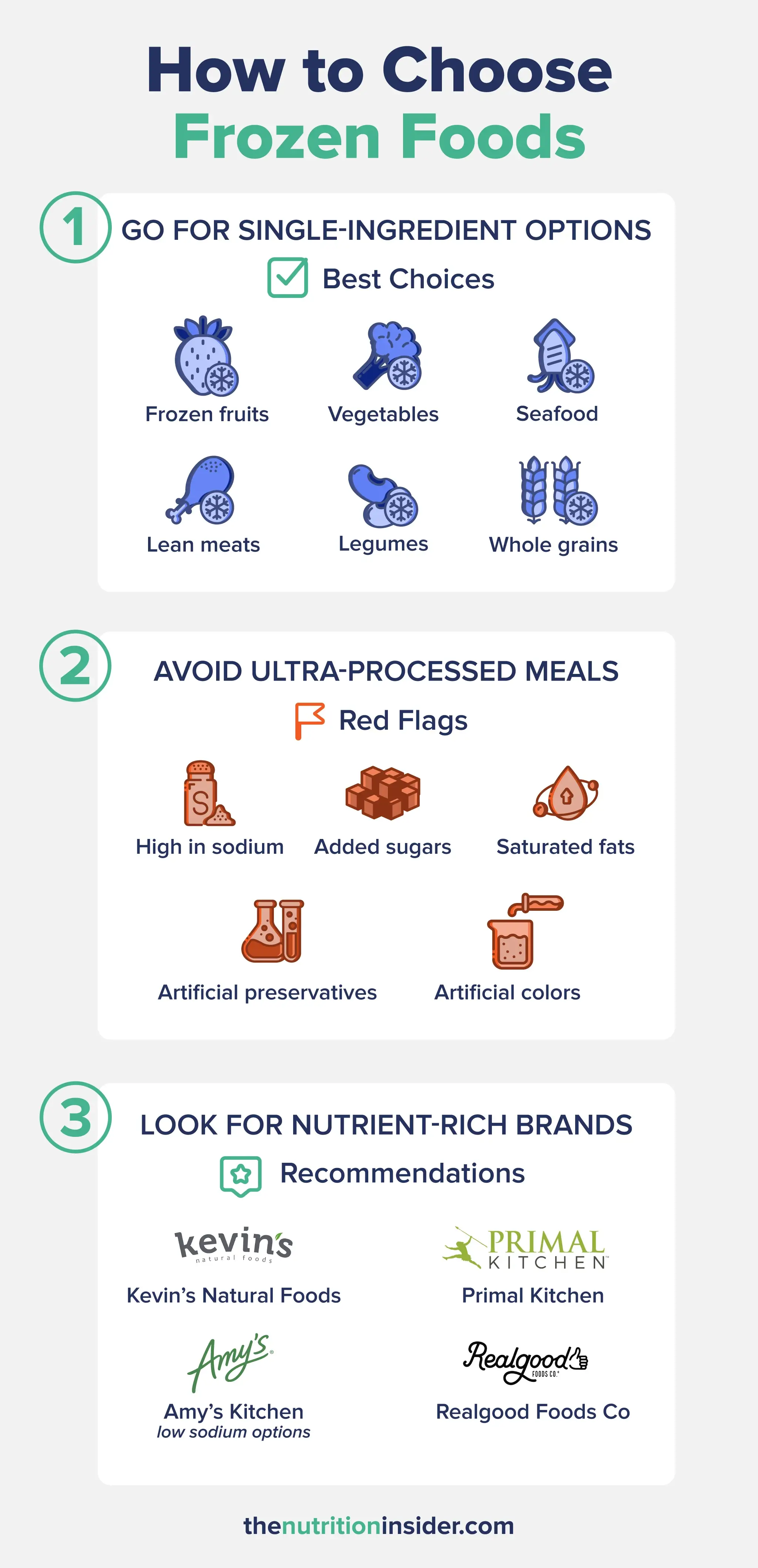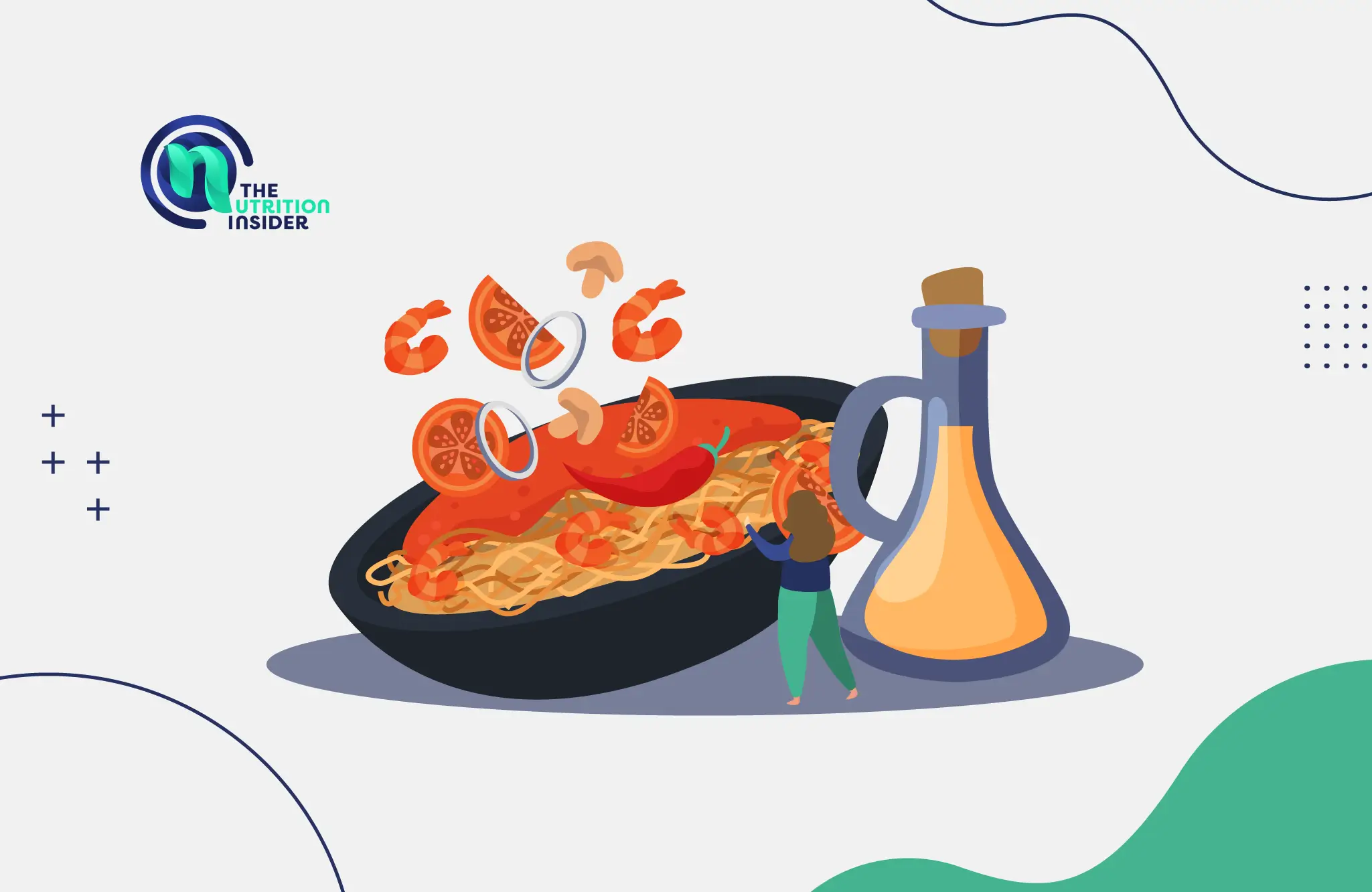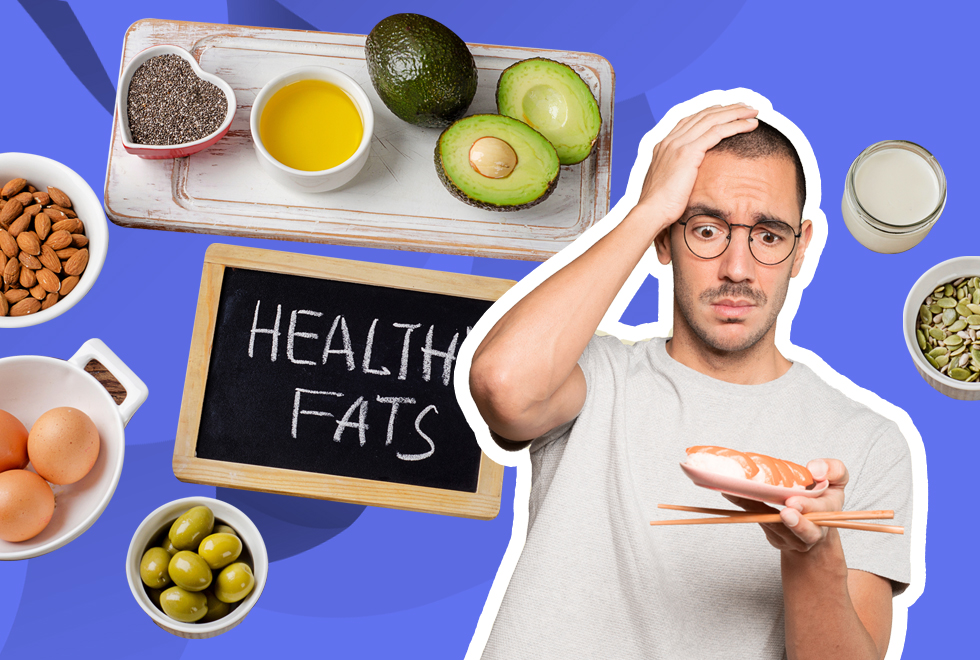This post contains links through which we may earn a small commission should you make a purchase from a brand. This in no way affects our ability to objectively critique the products and brands we review.
Is Frozen Food Healthy For You?
Evidence Based Research To fulfill our commitment to bringing our audience accurate and insightful content, our expert writers and medical reviewers rely on carefully curated research.
Read Our Editorial Policy
Frozen food can be rife with ingredients like preservatives, artificial colors, and tons of sodium—but that doesn’t necessarily mean that all frozen foods are bad.
In fact, it’s quite the contrary: many frozen foods can actually be healthy, time-saving, and affordable additions to your diet.
Just like foods in other areas of the grocery store, frozen foods can be healthy or unhealthy, depending on their ingredients and nutritional profiles. In this article, we’ll help you figure out whether frozen food is good for you or not, plus some healthy frozen meal options.

Are Frozen Foods Healthy?
This answer is not a simple one: sometimes frozen foods are healthy, sometimes they are not, and often they can fall somewhere in the middle.
Some frozen foods are undeniably nutritious and can even help you save time and money.
Single-ingredient frozen foods (like a bag of frozen blueberries, for example) are almost always considered healthy. Other examples of healthy frozen foods include:
- Frozen fruits of any kind
- Frozen vegetables (but avoid frozen vegetables with high-sodium sauces or seasonings added)
- Seafood, such as salmon, cod, shrimp, mahi mahi, and other frozen fish or shellfish
- Meat, including ground beef, turkey, chicken breast, meatballs, or any other type of lean protein
- Legumes and whole grains, such as edamame, peas, brown rice, or quinoa
- Burger patties, including beef, chicken, turkey, or salmon burgers
- Riced cauliflower (as a rice alternative) or other veggie-based sides
Frozen veggies and fruits are particularly beneficial to keep on hand, as they might even be more nutritious than their fresh counterparts. Fruits and vegetables are frozen at their peak ripeness and freshness, helping to preserve their vitamins and minerals and “locking in” flavor.
This is in contrast to fresh fruits or vegetables that have been picked weeks before they show up at your grocery store, which depletes nutrient stores. Plus, this means that you can eat out-of-season fruits and vegetables at any time of year.
Frozen foods like these can also help to eliminate food waste—no more molding strawberries or slimy spinach hiding in your produce drawer—which saves you money and helps the environment.
Are Frozen Foods Bad?
Once you move away from single-ingredient frozen vegetables, fruits, etc., into frozen meals or sides, it can become more challenging to know which are healthy.
Some things to look out for on the nutrition labels of any frozen meals (typically seen in ultra-processed frozen meals) include:
- Artificial preservatives, including BHA, BHT, and TBHQ1
- Artificial coloring, including Red 40, Red 3, Yellow 5, Yellow 6, and Blue 12
- Artificial sweeteners, such as aspartame, sucralose, and acesulfame-K3
- Potassium bromate or azodicarbonamide, which are dough conditioners that have been linked to cancer or other health problems4
Other nutrients to keep an eye on in the frozen food aisle include:
- Sodium: Ready-made meals (especially pizza and frozen dinners) are notoriously high in sodium, often containing thousands of milligrams per serving. Many ultra-processed foods are higher in sodium to improve flavor or shelf life, but excess sodium is linked to high blood pressure and heart disease. Try to choose frozen meals with 500-600mg of sodium per serving or less to support heart health. Much more than that, and you should be cautious about how much sodium you consume the rest of the day.5
- Servings Per Container: Even if a frozen meal looks like just one serving, it can often contain multiple servings—meaning you will double or triple the number of calories seen on the nutrition label.
- Added Sugars: Although you may think added sugars will only be in ice cream or other frozen desserts, they are found widely in frozen meals, including frozen pizza, frozen dinners, just about every Asian-inspired frozen meal (like orange chicken or teriyaki chicken), breakfast sandwiches, and sausage patties.
- Saturated Fat: Saturated fat is not as villainized as it used to be, but most people still should not overconsume it. This type of fat is found in fattier red meat, dairy (especially butter and cream), processed meats (like ham, bacon, and sausage), coconut, fried foods, baked goods, and chocolate.
Not all frozen meals are bad—some even have high nutritional value. For example, one of our favorite frozen meal brands is Kevin’s Natural Foods, which has several options made from less processed foods with great nutritional content. Other healthy frozen meal options include Primal Kitchen, Amy’s Kitchen (look for lower sodium ones), and Realgood Foods Co.
Frozen Foods FAQs
Is frozen food as good for you as fresh?
Many frozen foods are just as healthy—or more so—than their fresh counterparts. Single-ingredient frozen foods (like frozen fruits and vegetables, for example) have their nutrients “locked in” from when they were frozen. This means that they are often frozen at peak ripeness, which most often coincides with peak nutritional content. While macronutrients (carbs, fat, and protein) won’t change, freezing can ensure that vitamins and minerals don’t degrade as quickly as they would on the shelf or in the fridge. This is especially true for vitamin C.6 Healthy frozen meals also exist—just be sure they contain lean protein, fiber, healthy fat, and not too much sodium. Choose frozen meals without artificial preservatives, excess sodium or added sugars, food dyes, or excess saturated fats.
What are the disadvantages of frozen meals?
Many frozen meal options are high in sodium, saturated fat, added sugar, and artificial preservatives, colors, or sweeteners. Not all frozen meals contain these less-healthy ingredients, so you need to check the ingredients and nutrition facts label when you’re in the frozen food section.
What foods are not good frozen?
Dairy products typically don’t freeze well (unless they are designed to be frozen, like ice cream). Fruits and vegetables with high water content, like lettuce, greens, cucumbers, sprouts, tomatoes, and watermelons, can become soggy when defrosted and aren’t advised to be frozen. Fried or oily foods, including those with olive oil or mayonnaise, also don’t freeze well. Pasta, rice, eggs, egg whites, and cheese are also not great when frozen and then thawed.
- Zhang, X. J., Diao, M. N., & Zhang, Y. F. (2023). A review of the occurrence, metabolites and health risks of butylated hydroxyanisole (BHA). Journal of the science of food and agriculture, 103(13), 6150–6166. https://doi.org/10.1002/jsfa.12676
- Nigg, J. T., Lewis, K., Edinger, T., & Falk, M. (2012). Meta-analysis of attention-deficit/hyperactivity disorder or attention-deficit/hyperactivity disorder symptoms, restriction diet, and synthetic food color additives. Journal of the American Academy of Child and Adolescent Psychiatry, 51(1), 86–97.e8. https://doi.org/10.1016/j.jaac.2011.10.015
- World Health Organization. (2023). Aspartame hazard and risk assessment results released. https://www.who.int/news/item/14-07-2023-aspartame-hazard-and-risk-assessment-results-released
- DeAngelo, A. B., George, M. H., Kilburn, S. R., Moore, T. M., & Wolf, D. C. (1998). Carcinogenicity of potassium bromate administered in the drinking water to male B6C3F1 mice and F344/N rats. Toxicologic pathology, 26(5), 587–594. https://doi.org/10.1177/019262339802600501
- Wang, Y. J., Yeh, T. L., Shih, M. C., Tu, Y. K., & Chien, K. L. (2020). Dietary Sodium Intake and Risk of Cardiovascular Disease: A Systematic Review and Dose-Response Meta-Analysis. Nutrients, 12(10), 2934. https://doi.org/10.3390/nu12102934
- Bouzari, A., Holstege, D., & Barrett, D. M. (2015). Vitamin retention in eight fruits and vegetables: a comparison of refrigerated and frozen storage. Journal of agricultural and food chemistry, 63(3), 957–962. https://doi.org/10.1021/jf5058793








